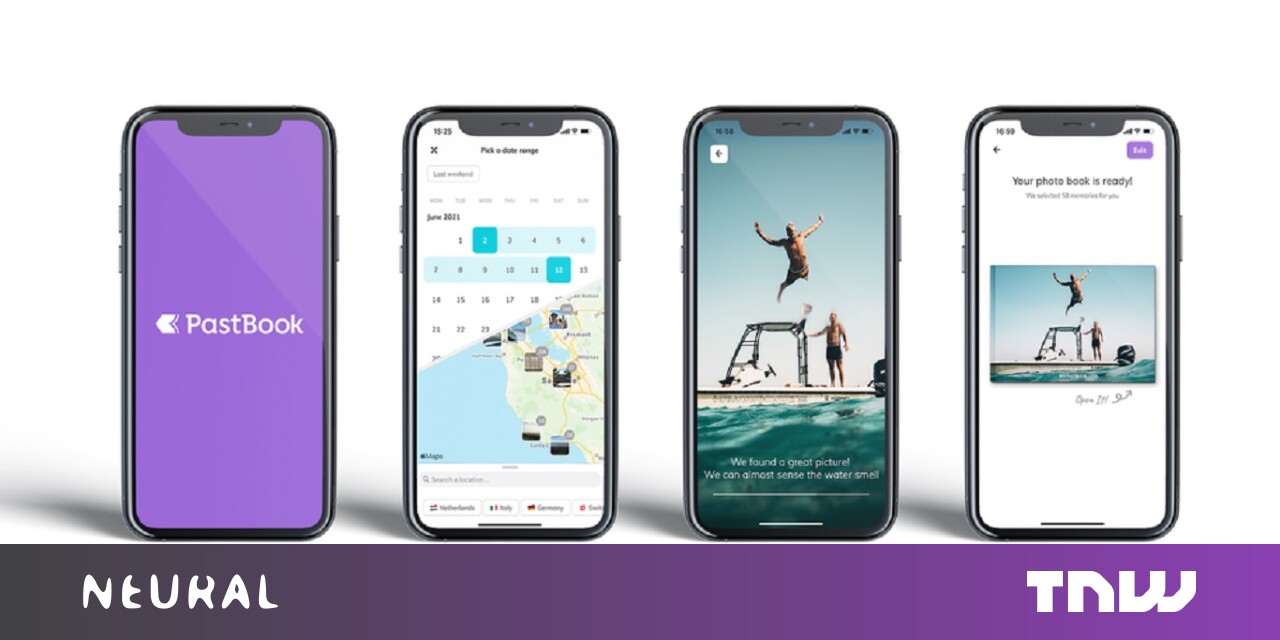#For Better Beginner Photography, Buy a Cheaper Body and Nicer Lenses – Review Geek

Table of Contents
“#For Better Beginner Photography, Buy a Cheaper Body and Nicer Lenses – Review Geek”

If you’re looking to get into photography, it’s easy to walk into Best Buy and pick up the latest and greatest DSLR or mirrorless camera that’s within your budget. But these cameras often come with mediocre lenses at best, so there’s a better way: Buy a cheaper (read: older) body and spend the bulk of your budget on a nicer lens (or lenses).
A nice camera lens won’t turn you into a star photographer. You still need to learn how to operate your camera to compose a good photograph. Still, a nice lens is a joy to use and can inspire you to work harder as a photographer. It also saves you money in the long run and could last for the rest of your life.
The Camera Lens Is Everything
Digital cameras are often judged by their body. People love to talk about megapixels, ISO, and digital displays. While a camera’s body dictates things like resolution, autofocus speed, and the overall fidelity of an image, the lens is the real star of the show.
A camera’s lens focuses and shapes an image before it reaches the sensor. For this reason, it has a much bigger impact on sharpness and style than the camera body. Unfortunately, cheap lenses are made of cheap parts, so they do a poor job at producing sharp well-illuminated images.
Cheap lenses can also hold you back from taking the style of photos that you’re interested in. Kit lenses usually have an aperture range of f/3.5 to 5.6, which means that they let in a relatively small amount of light and produce “flat” images where the subject and background are both in focus. They also tend to have an 18-55mm focal length, which offers the versatility of a medium-wide and mid telephoto lens but lacks the creative options that come with a proper ultrawide or telephoto lens.
That’s right, a more expensive lens gives you the chance to take stylized photos. If you like outdoor or street photography, you can upgrade to a wide-angle lens for huge scenic shots. You could buy a macro lens for detailed photos of flowers or insects, or an affordable prime lens (a lens with a single focal length—no zoom) for incredible general-purpose photography.
Of course, you aren’t stuck using your fancy lens for just one genre of photography. Telephoto lenses, which are generally used for sports or wildlife photography, are also incredibly popular in portraiture. That’s because they produce heavily blurred backgrounds at their longest focal length (maximum zoom) and sharp “flat” backgrounds at their shortest focal length (minimum zoom).
There are, of course, some limitations to cheap or old camera bodies. They have smaller sensors, slower autofocus technology, and smaller ISOs than newer DSLRs. But these issues, which lead to fewer pixels and poorer low-light performance, are a minor trade-off for the quality of a good lens. If anything, you’ll be bummed out by your camera’s dated display or lack of wireless features, not its lower megapixel count.
Shopping for a Camera Body

Alright, it’s time to buy an affordable camera body so we can blow the rest of our budget on a nice lens. Generally speaking, any professional-grade or mid-range body made in the last 10 or 15 years will do the trick, and you could always buy a newer budget body if you need newer features or like to capture video.
Before I give you some camera shopping tips, I need to mention the importance of brands. Each brand uses a unique lens mounting system, so it can be pretty expensive to switch over to Nikon once you’ve built a collection of Canon lenses (or vice versa). We’ll talk more about lens mounting systems in a second, but keep in mind that you’ll be stuck with whatever brand you choose for a very long time.
Here are some camera body shopping tips:
- The Old Camera: Professional DSLRs tank in value after just a few years, but they’re tough as nails and sport impressive sensors and high ISO settings. Just look at the Nikon D700 or the Canon EOS 5D Mark II. These cameras cost thousands of dollars in 2010 but now sell for less than an DSLR starter kit. Search for things like “best professional DSLR 2010” to find an old camera that you like, and check what it’s selling for on Adorama or B&H. You should also check Craigslist and Facebook Marketplace, as you can (usually) trust a professional to take good care of the camera that they bought for $3,000 just a decade ago.
- The Sorta-Old Camera: Cameras that cost $700 to $1,000 in 2015 now sell used for around $300. A DSLR like the Canon EOS 7D or the Pentax K-3 is a nice option for someone who wants a tough camera with a high-megapixel CMOS sensor, modern SD card support (older cameras tend to use compact flash), and decent video support.
- The Newish Camera: Newer DSLRs have features like Wi-Fi file transfer and high-res video recording. If those features are important to you, try hunting down a newer Nikon D3500 or Canon EOS Rebel T7i body within the $300 range (preferably lower). These entry-level camera bodies feel modern and are easy to find used at Adorama, eBay, B&H, and pawn shops.
Generally speaking, Adorama and B&H are the best online stores for used camera parts. They’re trustworthy and offer a 30-day return policy. If you plan to shop used through eBay, a pawn shop, or Facebook Marketplace, I suggest learning how to check that a camera works properly first. I also lsuggest checking out camera stores in your area for a good deal on old equpiment.
Shopping for a Nice Lens

Shopping for a lens can be a bit intimidating. Not just because you need to find a nice lens that fits your budget, but because you need to make sure that it’s compatible with your camera body. You’re gonna have to do a bit of research yourself, but we can fill you in on some important information and suggest a couple of popular lenses to help you start your search.
Here are four things I suggest looking into while shopping for a lens:
- Compatibility: Each brand of camera uses a unique lens mounting system, so an F-mount lens won’t work on an EF-mount body. So don’t try to shop by the brand—look up your camera’s lens mounting system now.
- Sensor Types: Nikon’s full-frame (FX) and cropped sensor (DX) cameras use the same F-style mounting system, meaning that their lenses are interchangeable. Canon full-frame (EF) lenses will fit on its cropped sensor (EF-S) cameras, but you can’t use the smaller lenses with full-frame Canons.
- Lens Type: Again, the type of lens that you buy can dictate the style of photos that you can capture. Take a minute to review the different lens types at our sister site How-To Geek.
- Flickr Groups: If you want to get an idea of how your photos will look with a certain lens, just look up the lens name on Flickr. There are Flickr groups dedicated to popular lenses with contributions from all manner of photographers. You could also rent a lens at a photography store or look up the lens on YouTube to get an idea of how it works.
Pretty simple, right? Once you know your camera’s mounting system and the type of lens that you want to buy, it’s just a matter of finding one that fits your needs and your budget. You could do a filtered search for your lens type on Adorama and B&H for exactly the type of lens you’re looking for. You could also visit a local photography store to ask for help from someone knowledgeable.

It’s time to start shopping for a lens. Need an easy place to start? Here are a few popular lenses for the most common camera bodies:
- Nikon
- Nikon AF-S DX 16-80mm f/2.8-4E ED VR: With a comfortable zoom range and great wide-angle coverage, this small and light lens is perfect for general-purpose photography and distortion-free zooms.
- Nikon AF-P 70-300mm f/4.5-5.6E ED VR: An extreme telephoto lens with a great focal range. Its fast autofocus system and vibration reduction make this a perfect telephoto lens for sports or wildlife.
- Tamron SP 90mm f/2.8 Di VC USD Macro: A wonderful macro lens with a hybrid image stabilizer for super-sharp close-ups.
- Nikon 50mm f/1.8G AF-S: A beautiful affordable portrait lens with ring-type ultrasonic autofocus, full-time manual override (so you can adjust the autofocus parameters by hand), and a nice focal length that’ll help subjects pop out from their surroundings.
- Canon (These are compatible with both EF and EF-S cameras)
- Canon EF 50mm f/1.8 STM: An affordable Prime lens for Canon cameras. Its wide aperture and lightweight design make it a stunning general-purpose lens, although the trade-off is a lack of zoom functionality.
- Canon EF 70-300mm f/4-5.6 IS II USM: Spanning a comfortable telephoto range, this lens is perfect for sports and wildlife photography. It’s also well stabilized and a popular choice for portraiture.
- Canon EF 85mm f/1.8 USM: An impressive portraiture lens with a short zoom. It’s great for sharp clean photos with a shallow depth of field. It also works well in low light.
Unlike camera bodies, lenses maintain their value over time. Don’t be afraid to buy a really expensive lens if you think you’ll use it. Worse comes to worst, you can likely resell it for a little less than what you bought it for.
Speaking of used equipment, you can always buy a preowned lens from Adorama or B&H. These websites write good descriptions for used products and honor a 30-day return policy. You can also shop for used equipment at local camera stores, eBay, Craigslist, or Facebook Marketplace. Still, you might want to learn how to check that a used lens is working properly before you make an expensive mistake.
If you already bought a camera with a kit lens, don’t stress. You can resell the kit lens for $50 to $100 and move onto something fancier. You could also hang on to your kit lens. It never hurts to hold onto a lens that you’re familiar with, even if it isn’t the most expensive lens on the planet. But if you haven’t made it that far yet, we recommend skipping the kit and piecing everything out yourself. You’ll start off at a much higher level this way.
If you liked the article, do not forget to share it with your friends. Follow us on Google News too, click on the star and choose us from your favorites.
For forums sites go to Forum.BuradaBiliyorum.Com
If you want to read more like this article, you can visit our Technology category.




